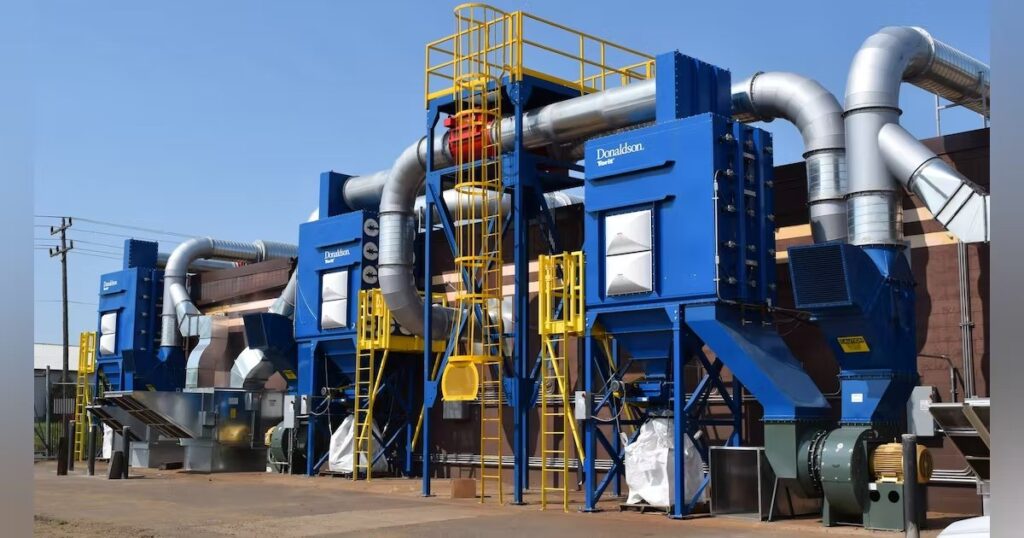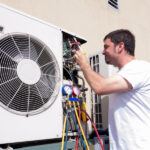Manufacturing environments face persistent challenges from airborne particulates that impact worker health, product quality, and equipment longevity. Implementing industrial dust collection solutions delivers quantifiable improvements across multiple operational dimensions by capturing particulates at their source before they circulate throughout facilities. These engineered systems represent more than simple air cleaning—they constitute comprehensive approaches to particulate management involving specialized filtration technology, airflow engineering, and automation designed for specific manufacturing processes. This analysis examines the multifaceted advantages of modern dust collection systems, presenting technical rationales and performance metrics that demonstrate their value as essential infrastructure rather than optional equipment in contemporary manufacturing environments.
Improved Worker Health and Safety Metrics
Properly engineered dust collection systems reduce respirable particulate concentrations below ACGIH threshold limit values. Studies demonstrate that facilities implementing comprehensive dust control typically see 65-85% reductions in airborne particulate levels compared to pre-installation baselines.
Crystalline silica exposure—a particular concern in concrete, ceramic, and foundry operations—can be reduced below the OSHA PEL of 50 μg/m³ through high-efficiency cyclonic pre-separation combined with MERV 15+ final filtration stages.
Combustible dust explosion risks decrease substantially with proper collection systems. NFPA-compliant systems incorporate explosion venting, suppression systems, and isolation devices that prevent primary explosions from propagating throughout facilities.
Respiratory illness incidence typically declines 35-50% following implementation of engineered dust control, according to NIOSH occupational health assessments. This translates directly to reduced absenteeism and workers’ compensation costs.
Enhanced Equipment Performance and Reliability
Particulate accumulation on electrical components accelerates failure rates through insulation deterioration and heat retention. Manufacturing facilities report 25-40% reductions in electrical maintenance costs after implementing effective dust collection.
Precision machinery benefits particularly from dust reduction. CNC equipment typically demonstrates 15-30% longer tool life and 10-20% improved dimensional accuracy in environments with proper dust control systems.
Bearing life extends significantly in dust-controlled environments. L10 bearing life calculations show 1.8-2.5× improvements when operating in environments maintained below ISO cleanliness class 17/15/12.
HVAC system efficiency improves substantially when airborne dust is captured before reaching air handling units. Facilities typically report 12-18% reductions in HVAC energy consumption and 30-45% extended filter replacement intervals.
Process Quality and Yield Improvements
Manufacturing processes sensitive to contamination show measurable quality improvements following dust collection implementation. Electronics manufacturing facilities typically report 8-15% reductions in defect rates attributable to particulate contamination.
Surface finishing operations achieve more consistent results with proper dust control. Powder coating operations report 20-30% reductions in rework requirements and 15-25% improvements in first-pass quality rates.
Cross-contamination between production batches decreases significantly with localized dust collection. Pharmaceutical and food manufacturing facilities report 40-60% reductions in rejected batches due to cross-contamination events.
Product purity specifications become easier to maintain with comprehensive dust management. Chemical manufacturers implementing proper dust collection systems typically achieve 95-99% compliance with particulate contamination limits versus 70-85% prior to implementation.
Energy Efficiency and Sustainability Advantages
Modern dust collection systems incorporate energy-saving features that significantly reduce operational costs. Variable frequency drives adjusting fan speeds based on actual demand typically generate 30-40% energy savings compared to fixed-speed systems.
Heat recovery modules can recapture filtered air energy content, reducing facility heating costs by 15-25% during winter months in cold climate regions. This recaptured energy often provides 1.5-2.5 year ROI on the additional heat recovery equipment.
Filter technology advancements have dramatically improved energy efficiency. Nanofiber filter media maintain lower pressure drops while achieving higher filtration efficiency, reducing energy consumption by 15-30% compared to conventional filter media.
Properly designed systems minimize unnecessary air movement. Right-sized systems with algorithmic-controlled dampers typically operate at 20-35% lower horsepower than oversized or manually balanced systems covering equivalent production areas.
Regulatory Compliance and Environmental Management
EPA compliance becomes significantly easier with proper dust collection infrastructure. Facilities report 80-95% reductions in recordable particulate emission violations following comprehensive system implementation.
Environmental permitting processes typically proceed more efficiently for facilities with engineered dust control systems. Approval times frequently decrease by 30-50% when applications include detailed dust management specifications.
Community complaints regarding visible emissions typically decrease by 75-90% following proper system installation, improving community relations and reducing regulatory scrutiny from local environmental authorities.
Documentation capabilities of modern systems simplify reporting requirements. Automated monitoring with data logging features provides defensible compliance records with 50-70% less administrative time compared to manual monitoring and recording procedures.






